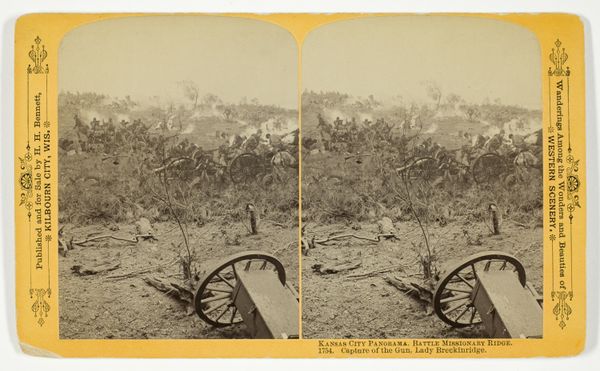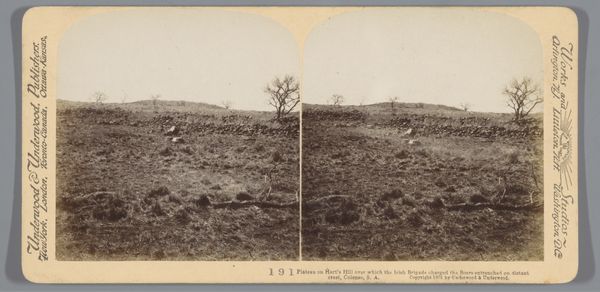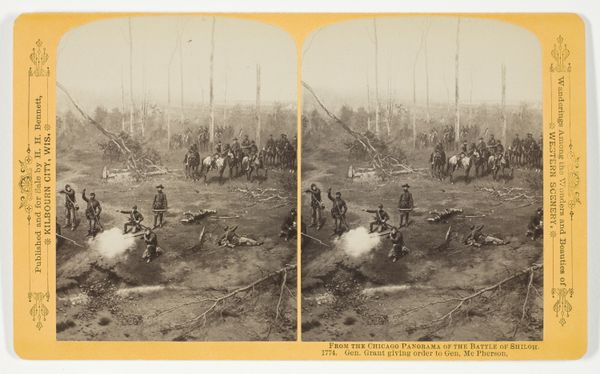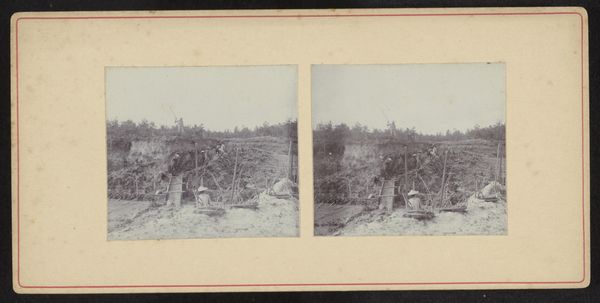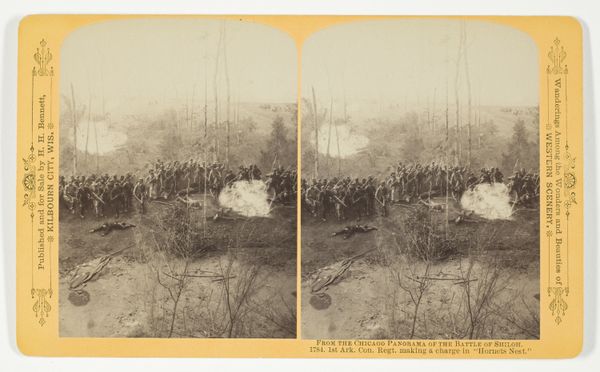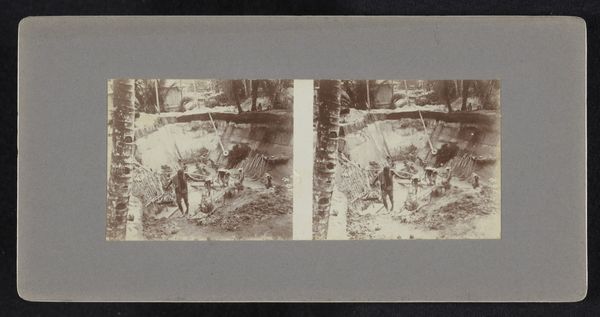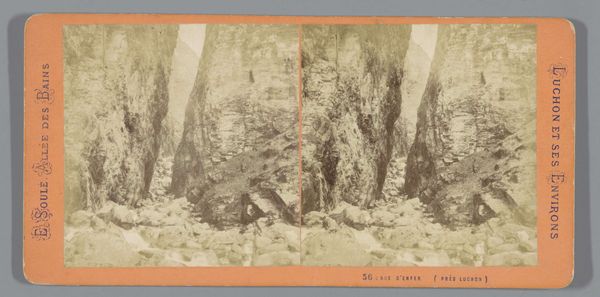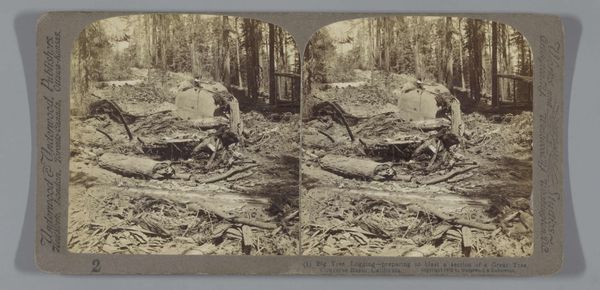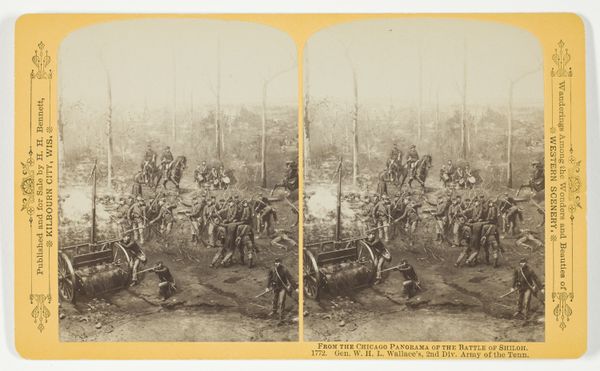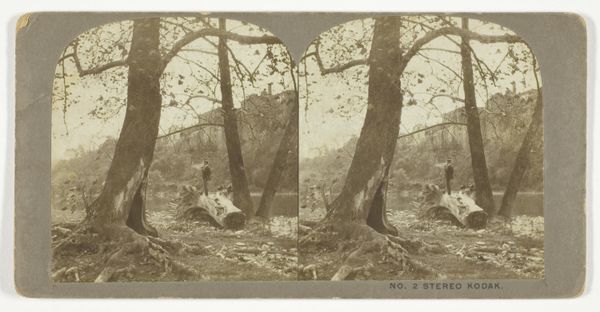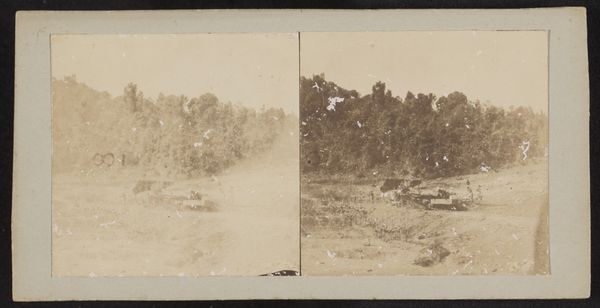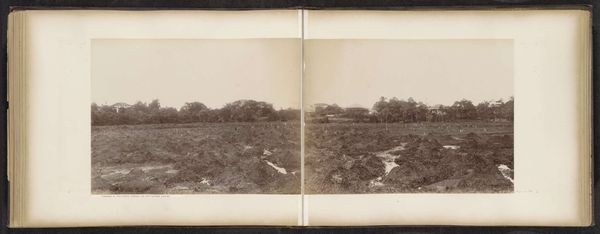
Crescent Regt. of New Orleans in the "Hornets Nest" 1887
0:00
0:00
print, photography
#
16_19th-century
# print
#
landscape
#
figuration
#
photography
#
men
#
history-painting
Dimensions: 10 × 7.4 cm (each image); 10.7 × 17.7 cm (card)
Copyright: Public Domain
Curator: This striking print from 1887 is titled "Crescent Regt. of New Orleans in the 'Hornets Nest'" and is attributed to Henry Hamilton Bennett. It depicts a scene derived from the Chicago Panorama of the Battle of Shiloh. Editor: My first thought is how desolate it feels, despite the implied chaos of battle. The tones are so muted, the trees stark and skeletal… it evokes a feeling of profound loss and disillusionment. Curator: I agree; the limited tonal range amplifies that sense of bleakness. This stereo card, a type of popular photography in the 19th century, offers a staged view, however, aimed at recreating a specific historical moment for a viewing public hungry for narratives of the Civil War. What symbols are revealed within its careful construct? Editor: Well, beyond the obvious symbolism of uniformed men in conflict, the landscape itself becomes a potent symbol. The bare trees reaching skyward might represent the disruption of natural order brought by the war, mirroring the ruptured social and political fabric of the time. The very name, "Hornets Nest," suggests an enraged, violated natural space, disturbed by violent intrusion. Curator: Absolutely. The 'Hornets Nest', so named for the intense resistance encountered by Union troops there, already carried immense symbolic weight for the public. Bennett is capitalizing on existing associations. How interesting is it, too, that this photographer, operating after the fact, engages in constructing the image of a traumatic event, highlighting the public desire to engage with historical dramas and to render the realities into narratives. Editor: The inclusion of specific units, like the Crescent Regiment, speaks to that desire for particularity, for stories to cling to amidst widespread suffering. We're looking at more than just war here; we're witnessing the dawn of manufactured memory, playing a key role in shaping public perception of a very significant war through mass distribution. Curator: Precisely. And how powerful that image remains; it causes one to reflect upon all those stories we were, or are not, told, shaping our comprehension of culture. Editor: Indeed; by presenting these moments through such accessible images, photographers helped define the visual vocabulary through which future generations understood the war and, potentially, conflict itself. A sobering thought.
Comments
No comments
Be the first to comment and join the conversation on the ultimate creative platform.
